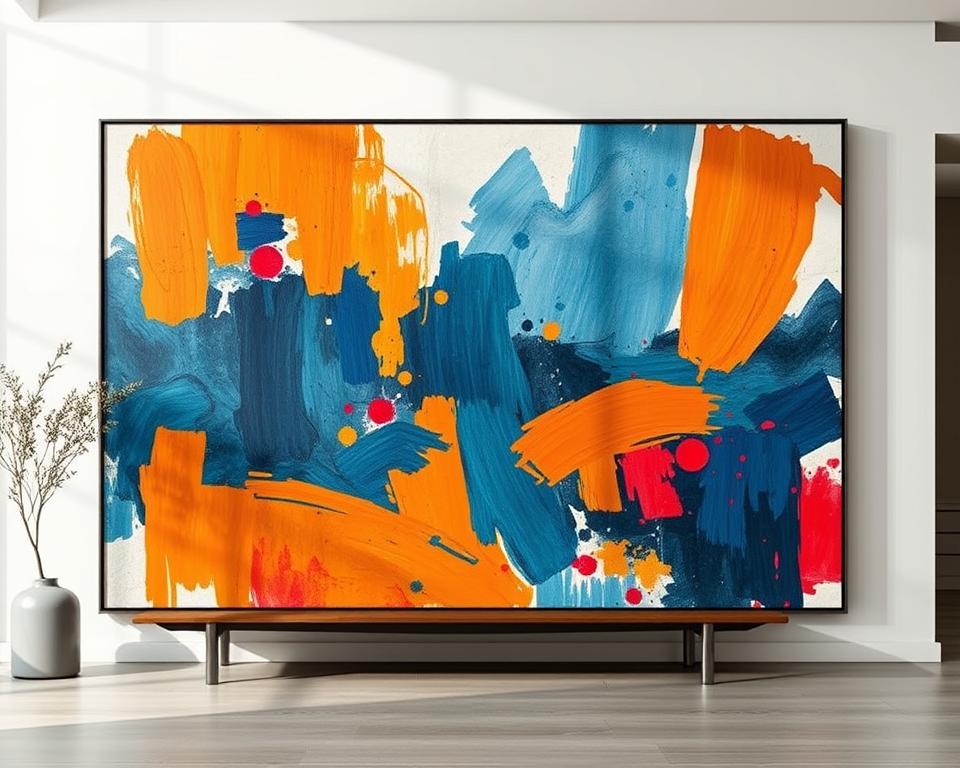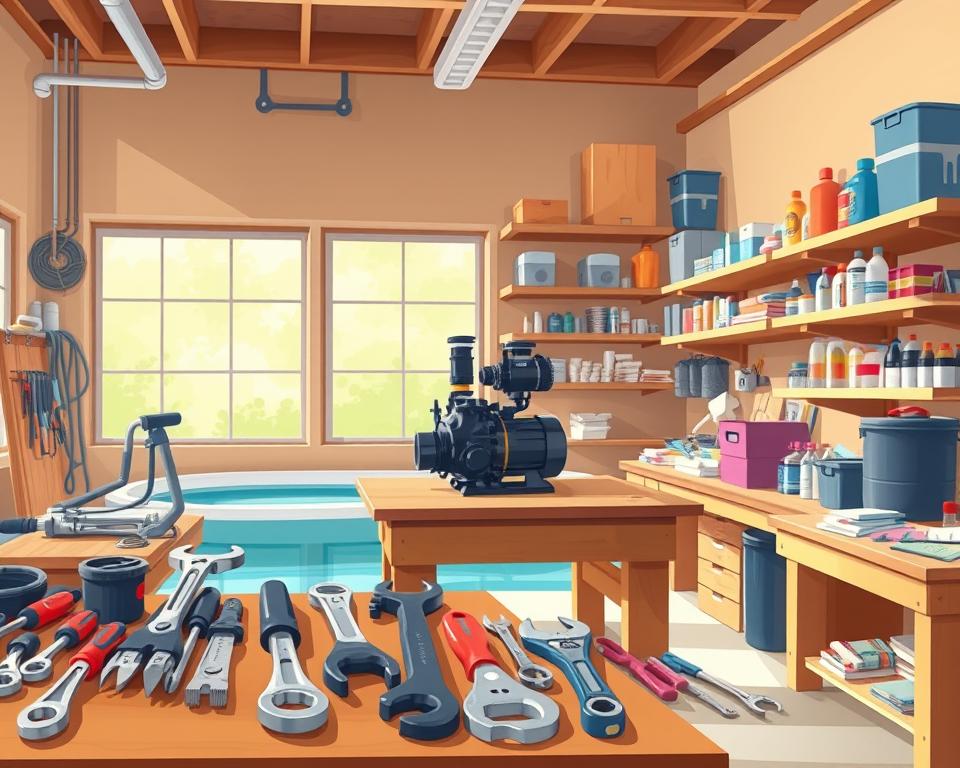Luxurious Durian Cakes Made Fresh Daily at My Bake Studio Singapore
Durian cakes have become incredibly popular in Singapore. They’ve evolved from simple street food to stars of the party scene.
A unique 3D durian cake is crafted by My Bake Studio. It looks so real, thanks to its carefully made outer shell and delicious filling. For either a birthday or a wedding, this Durian cake catches everyone’s eyes.
Placing an order on their website is simple. Their selection includes everything from individual slices to large, bespoke cakes. A complimentary plastic knife and candle are also included. The height of the cakes starts at 3.5 inches. For special designs, prices can go from $30 to $108 and higher.
This piece explains why durian is such an enduring favorite. It talks about My Bake Studio’s durian cakes, how you can customize them, and tips for ordering and storage. You’ll have all the information you need for getting your perfect durian cake – mybakestudio.

The Reason Durian Cakes are a Favourite in Singapore
A love for strong flavors has always been a part of Singaporean culture. Durian cake suits their taste perfectly. You can find it at street stalls, bakeries, and boutique shops. Their offerings span from traditional mousse cakes to intricate 3D creations. At any event, durian cake serves as a treat that both comforts and wows the crowd.
D24 and Mao Shan Wang varieties are in high demand. Combinations of durian with pandan or ondeh ondeh are also very popular. Places like My Bake Studio specialize in durian. They are the preferred choice for special events.
Durian cake is a frequent online search. They use terms like durian cake Singapore or nearby durian cake. Online shops make it easy to find the best by flavor, price, and design.
Durian cakes are popular for special days like birthdays and weddings. Their one-of-a-kind designs and decadent fillings are an ideal fit. They are perfect for those who want to feature local tastes and create a talking point.
Here’s a quick guide on why people choose durian cakes and what they look for:
| Type of Buyer | Key Considerations | Frequent Search Queries |
|---|---|---|
| Celebration Hosts | Visual impact, authentic durian flavour, custom sizing | durian cake, best durian cake |
| Purists | True durian flesh filling, familiar sponge pairings, natural colouring | durian cake near me, durian cake Singapore |
| Those Buying Gifts | Novelty design, reliable delivery, elegant packaging | durian cake near me, best durian cake |
Durian cake – My Bake Studio
My Bake Studio shines a spotlight on durian with its creative cakes. These creations are ideal for celebrations and special occasions. The selection at My Bake Studio includes realistic 3D designs. Inside, they feature traditional sponge cake and authentic durian. The combination of intense flavours and beautiful aesthetics is a hit with those seeking durian cakes.
Signature durian offerings at My Bake Studio
The famous 3D durian cake has edible fondant. It’s sculpted and painted to look incredibly realistic. Inside, there’s soft sponge cake with real durian. It’s made for big events like weddings and birthdays. It’s also a choice for businesses looking for something unique.
Available durian types (D24, Mao Shan Wang where applicable)
For durian desserts, D24 and Mao Shan Wang are the preferred varieties. To ensure that every customer can find their preferred taste, My Bake Studio sources these varieties. You can even ask for a specific type when you order. This allows each person to find their desired flavour.
Positioning of Durian Cakes in My Bake Studio’s Specialty and Custom Range
Durian cakes are placed in a special category at My Bake Studio. They blend distinctive design with excellent baking skills. With various sponge and filling choices, the cakes are truly standout. This ensures that clients are satisfied with both the appearance and flavour of their cake.
| Feature | What you can expect | Why it matters |
|---|---|---|
| Design | 3D durian sculpting in edible fondant | Makes for unforgettable centerpieces at events |
| Durian variety | Options include D24 and Mao Shan Wang | Lets customers select flavours they are familiar with |
| Interior | Fresh durian flesh paired with sponge or cream | Maintains authentic taste and creamy texture |
| Personalization | Kid-friendly, adult, and corporate themes available | Matches event motifs while keeping durian central |
| Availability | Order online with the option for custom add-ons | Conveniently accessible via the My Bake Studio online store |
Customisation and Signature 3D Durian Cake Designs
My Bake Studio creates 3D durian cakes that can impress anyone. Each cake has a shell made of edible fondant, designed with detailed spike patterns. They’re also hand-painted to look real. Inside, you get to choose the sponge and durian flesh filling to fit your taste.
If you’re looking for a durian cake online, There are fun themes for kids and elegant designs for adults. The options range from mermaid tails to Super Mario. Additionally, there are creative designs that combine characters with realistic durian forms.
We have cakes for small or big parties. Every layer is approximately 3.5″ tall. You can choose from a simple one-tier to a fancy multi-tier cake. There are many sizes, so you can find the perfect fit for your gathering.
You can ask for specific details like how many layers or what flavors you want. To maintain the cake’s aesthetic, you can also specify where candles should be placed. Just remember, too many candles might change how it looks.
| Design Element | Choices | Additional Information |
|---|---|---|
| Sculpting of the Exterior | Hand-textured spikes, edible fondant, painted finish | Realistic appearance; durable for display before serving |
| Integration of Themes | Themes for kids (e.g., SpongeBob, Frozen), novelty for adults, mixed motifs | Upon request, durian motifs can be combined with characters |
| Tier & Size | From single to multiple tiers; height of each tier is approx. 3.5″; weight from 0.5kg to 3.0kg | Multiple sizes available for small parties to large events |
| Sponge & Fillings | Filling of durian flesh with choices of sponge (vanilla, chocolate, pandan) | Personalized combinations are created to balance flavours |
| Ordering Notes | Design proofs can be provided, and custom requests are accepted | Plan candle placement and delivery timing for best results |
| Delivery | Delivery of durian cake is available throughout Singapore | Select a delivery window when you order your durian cake online |
Comparing options? Look for detailed images and sizes. My Bake Studio can show you samples to help decide. It’s also smart to confirm delivery times and packaging for your event. This will ensure that everything runs smoothly on the day of your event.
Durian Cake Flavours, Fillings, and Frosting Choices
Fillings and frostings that enhance the creamy texture of the fruit are preferred by durian lovers. Often, classic orders at a durian cake shop feature a combination of durian filling and a soft sponge. This combination ensures the cake remains light while emphasizing the durian flavour.
For a subtle background flavour, vanilla or butter sponge is a good choice. For a striking difference, go for chocolate or pandan. My Bake Studio suggests using a neutral sponge for layered cakes. They also offer bolder choices for those wanting more flavor.
The type of frosting you pick affects both the taste and how you handle the cake. Swiss meringue buttercream is silky and great for keeping the cake cold. Fondant is better for 3D shapes and sharp details. The team at my bake studio frequently uses a combination of Swiss meringue buttercream and fondant. This combination results in a cake that is smooth and simple to shape.
Adding different flavors can make the durian filling even more exciting. Gula melaka is introduced for sweetness with ondeh ondeh. Pandan adds a fresh scent. Chocolate makes it rich and balances the creamy taste. My bake studio also has mango and Thai milk tea as popular choices. They let customers pick from a wide variety.
Discussing natural colors is important. Some can change the look or feel of the durian filling. They might even leave a slight taste behind. For assistance with your order, if you are concerned about colors affecting the filling, ask the team at my bake studio.
| Part | Typical Choices | Best Pairings | Additional Info |
|---|---|---|---|
| Interior | Pulp of fresh durian (D24, Mao Shan Wang) | Vanilla sponge, butter sponge | Use ripe, well-strained flesh for a smooth texture |
| Sponge | Butter, vanilla, chocolate, pandan | Durian pairs well with neutral sponges; for contrast, use chocolate or pandan | A neutral sponge makes the durian’s scent stand out |
| Frosting | Swiss meringue buttercream, fondant | Use buttercream under fondant for shaped cakes | For easy cutting, let buttercream warm up for 30–60 minutes after cooling |
| Complementary Flavours | Pandan, ondeh ondeh, chocolate, mango, Thai milk tea | Try pandan or ondeh ondeh for unique flavors; chocolate for depth | If you are uncertain, inquire about how natural colors could impact the taste |
When looking for a durian cake, ask about things like the sponge’s density, cream amounts, and color use. These choices affect the cake’s feel and flavor. To achieve the desired texture, use a recipe guide from the bakery for customization.
Ordering and Delivery: Durian Cake Singapore and Durian Cake Delivery Services
It is easy to order a durian cake from my bake studio. The website shows different options for each cake. The weight, filling, and fondant design can all be chosen by you. Pick your favorite type of durian, select the size from 0.5kg to bigger sizes, and add any personal touches like a message or theme.
Just follow the steps on the cake’s page to order it online. Pick the type you want, set the date and delivery time, and then enter your contact info and any details for building access. If you want something special like a different sponge or a 3D theme, the price will update before you pay.
Orders with a quick turnaround if the schedule allows, are possible. Some folks have gotten slots in just two days. To have your cake delivered within the same week, be sure to check the cut-off times on the page and at checkout.
Delivery times can change depending on where you live. When checking out, always confirm your delivery time. Contact My Bake Studio immediately if you are in a hurry and need your durian cake delivered quickly to check for availability and any additional charges for expedited delivery.
To maintain the perfect appearance of the fondant and buttercream, the cakes are packed with care. To keep them stable, they are shipped in robust boxes with supports. If you are transporting your cake to another location, keep it cool and out of the sun upon arrival.
Every cake comes with a free plastic knife and a candle. However, avoid placing too many candles near the decorations, as the heat can damage the buttercream designs. You can request additional candles for a large party by leaving a note with your order.
Here’s a quick guide to help you choose the best cake and delivery service.
| Option | When to select | Range of sizes | Delivery note |
|---|---|---|---|
| Online standard durian cake | Small gatherings and casual orders | 0.5kg–1.5kg | Select your preferred time slot at checkout; normal cut-off applies |
| My bake studio – custom durian cake | Designs that are sculpted or themed | 1.0kg–>3.0kg tiers | For detailed work, allow for additional lead time; express delivery may be an option |
| Delivery of express durian cake | Short-notice events or surprises | 2.0kg–0.5kg | Confirm the cut-off time when placing your order; subject to availability |
| Large event orders | Corporate functions and weddings | Multi-tier, custom portions | Book early; delivery and setup options available on request |
Cake Care and Storage Tips for Durian Cakes
Storing a durian cake right needs some planning. For keeping, thawing, displaying, and transporting it, follow these simple steps. Its texture and flavour will remain perfect this way. These tips are great for cakes from durian cake – my bake studio and other places selling durian cake in Singapore and offering delivery.
Refrigeration and thawing guidance
Until 30–60 minutes before serving, keep cakes with buttercream in the refrigerator. If they are allowed to thaw slightly first, Swiss meringue buttercream cakes are easier to slice. They should never be cut or eaten straight from the refrigerator, as they will crumble and the filling will be excessively hard.
Best serving temperature
Serving them at room temperature or in an air-conditioned room is ideal. This makes them soft and creamy. If possible, try to maintain a temperature of around 20–24°C. In Singapore, if your room has air-con, the buttercream will stay just right for 2–3 hours out in the open.
Display and transport recommendations
Avoid hot, humid locations or direct sunlight. These conditions can cause fondant to melt and ruin 3D details. Request that the cake be packed in a way that keeps it cool when you are having it delivered. Also, try to move it in a vehicle with air-conditioning if you can.
| Action | Its importance | Suggestion |
|---|---|---|
| Keep refrigerated until serving | Keeps buttercream and filling stable | Keep at 4°C; remove 30–60 minutes before cutting |
| Allow to thaw before cutting | Avoids crumbly slices and damaged fondant | Allow 30–60 minutes at room or air-con temp |
| Place on display in an air-conditioned area | Maintains shape and texture | Limit display to 2–3 hours indoors |
| Steer clear of sun and humidity | Stops melting and the bleeding of colors | Position it away from windows and outdoor food displays |
| Transport tips | Guarantees the cake arrives in one piece | For durian cake delivery, use a strong box, a chilled pack, and an air-conditioned car |
For gifts, parties, and special orders, these simple steps help in caring for durian cakes. When purchasing from durian cake – my bake studio, always review the notes for specific advice on fillings or sculpted designs.
Value, Sizes, and Pricing: How to Find the Best Durian Cake Online
Looking for the perfect durian cake involves checking the price, size, and overall value. Base prices from bakers start at approximately $30 and can exceed $108. Adding custom designs, top-quality Mao Shan Wang fillings, and elaborate decorations can increase the cost.
Starting prices that are typical vary based on size and details. A smaller, 0.5kg durian cake is cheaper. For a 1.5–2.5kg cake with special designs and premium durian, the price jumps. When exploring durian cake options, it is wise to obtain a detailed quote. This should list all the costs, like the basic cake, deluxe fillings, decorations, and delivery charges.
Understanding portion sizes can help you decide. Below are usual weights and servings to guide you.
| Mass | Approx. Servings | Application |
|---|---|---|
| 0.5 kg | up to 6 people | Tasting portions, small gatherings |
| 1.0 kilogram | 5–10 pax | Celebrations for small families |
| 1.5 kilograms | 10–18 people | Medium parties, office treats |
| 2.0 kilograms | 18–25 people | Larger get-togethers |
| 2.5 kilograms | 25–32 pax | Events for large families |
| 3.0 kg | 32–40 people | Large parties or weddings |
| >3.0 kg | 40+ people | Corporate orders and large receptions |
Most durian cake orders come with a plastic knife and a single candle. Avoiding an excessive number of candles is recommended. For special packaging and expedited orders, additional charges may apply. To see what is included and what is extra, examine online durian cake offers carefully.
To figure out the best deal, ask for detailed prices: cake base, type of durian, decoration fees, and delivery. You can also determine if the taste and appearance justify the cost by reading reviews. This way, you can easily find the ideal durian cake that fits your event and budget.
Customer Reviews and Social Proof for My Bake Studio Durian Cakes
Customers share their thoughts on durian cake from my bake studio. They talk about its looks, taste, and delivery speed. Ratings and marketplace listings help people decide where to buy durian cake.
Recent customer experiences — taste, design and on-time delivery highlights
The 3D Durian Cake gets tons of compliments for its looks and taste. The D24 and Mao Shan Wang flavours are loved by people. Some even got their cake delivered in just two days for last-minute events.
Common praises and occasional cautions
The moistness, cool designs, and halal ingredients of the cake are loved by customers. A few mentioned a dark colour that tasted a bit like charcoal. These concerns were promptly addressed by the studio, which made the customers happy.
How reviews influence choosing the best durian cake near me or durian cake shop
Shoppers look at reviews for taste, design, and timely delivery. Good ratings and photos on platforms provide strong social proof. When searching, check for recent images and comments on the cake’s natural coloring.
Health and Taste: Durian Cake Benefits and Considerations
Durian cakes have a bold taste and rich texture loved by many in Singapore. Sweetness, healthy fats, and a unique aroma are added by the fruit. A simple cake is transformed into something memorable by this. Think about the taste, how big each piece should be, and what your guests might like.
Nutritional note
Energy, potassium, and B vitamins are provided by durian, which is high in calories. When making durian cake, it’s often mixed with butter or cream. This increases the fats and calories. Share smaller pieces to maintain the flavour while reducing calories.
Pairing and taste profile
The filling is creamy and strong. Pairing it with a simple vanilla or light butter sponge cake balances the flavors. Adding flavors like pandan, chocolate, or ondeh ondeh can make the taste even better. Most bakers suggest using basic sponge cakes to highlight the durian.
Dietary considerations
By request, places like My Bake Studio offer halal ingredients and may make eggless or vegan cakes. However, this depends on what’s available. Dairy is usually present in durian fillings. So, let the bakery know about any allergies or dietary needs when ordering from durian cake – my bake studio or elsewhere.
Tips that are practical
By considering your guests’ preferences and the richness of the cake, decide on the cake size. If you need a cake that’s halal or dairy-free, ask for specific ingredients. Try to use less cream when baking a durian cake at home. To maintain the taste without excessive richness, mix it with something lighter.
The Final Word
In creating special durian cakes, My Bake Studio excels. A unique 3D Durian Cake and many custom options are offered by them. You can choose from different durian types like D24 or Mao Shan Wang. Their cakes blend delicious durian with light sponge and frosting. These are perfect for birthdays, weddings, and other events in Singapore.
Ordering online is simple. The website provides clear information on sizes, tiers, and when to order by. If you need a cake quickly, check the delivery times. Your cake should be refrigerated. Before you intend to serve it, thaw it for 30–60 minutes. It should also be kept away from heat and sunlight.
The best cake can be chosen with the help of customer reviews and detailed flavor lists. Check the durian type, the height of the cake tiers, and the delivery options before you place your order. You will receive a great-tasting cake that arrives on time for your celebration in Singapore this way.









